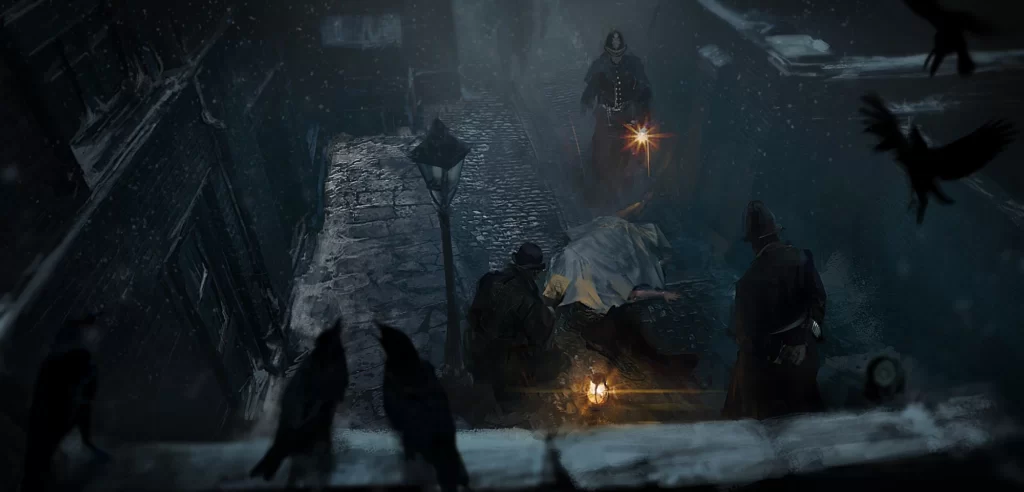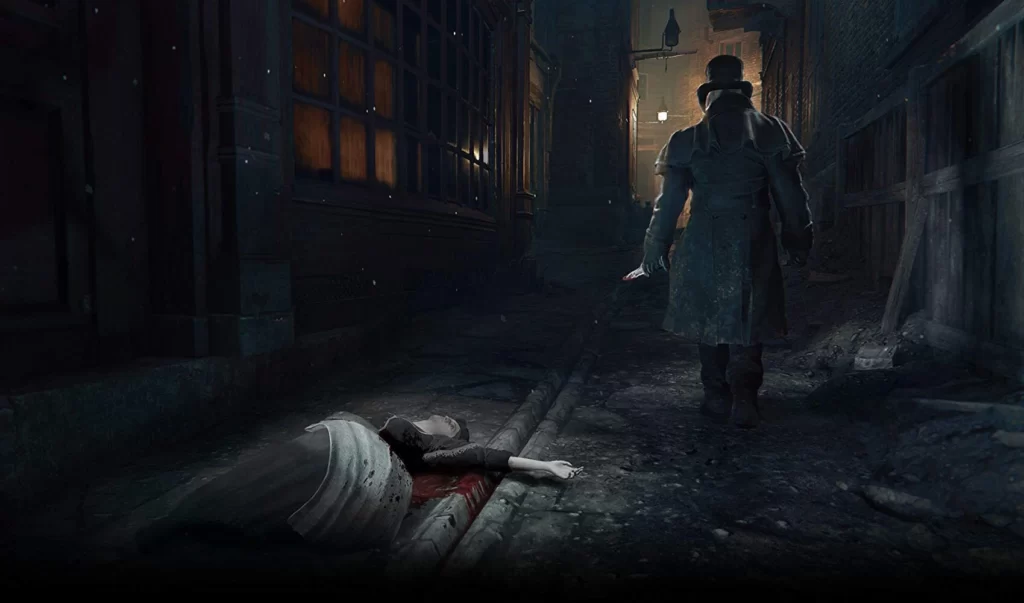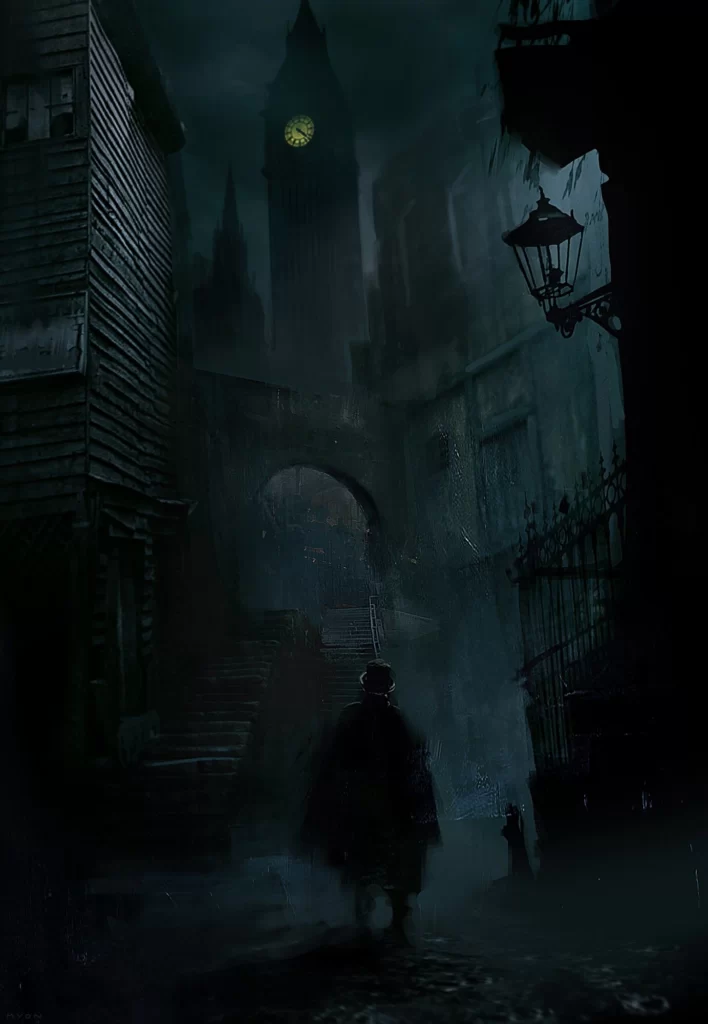In November 1888, the reign of terror caused by Jack the Ripper was coming to an end. This fact was of course unbeknown to police at the time who suspected that Jack would continue killing until he was caught or was dead – a theory still prevalent among historians and “ripperologists” today.
Mary Kelly is now widely considered to be the final victim of Jack the Ripper in a spree of killings that would only blight the streets of Whitechapel, London for a few months but would cement his name in history. There are a few very odd anomalies about the Mary Kelly murder, and though I won’t draw conclusions myself in this article, I will give you the facts and let you decide whether Mary Kelly truly was the final victim of Jack the Ripper, or more controversially, whether Mary Kelly was a victim at all.
Establishing Commonality Among Victims is Crucial to Identifying a Serial Killer
Although considered the first serial killer or the first modern serial killer, Jack the Ripper was neither. There had been grizzly murders previous to his killing spree and even at the time of his murders, there was at least one other serial killer active in London at that time (Thames Torso Murders).
Jack did strike at the heart of Victorian tendencies to create mass hysteria about certain crimes (or unusual occurrences in general – Spring Heeled Jack) and he became almost godlike in a short period of time, with sensationalist newspaper headlines and the looming spectre of a man in a frog jacket and top hat wandering around London’s East End carving up prostitutes with a sharp blade.
Today there are a few women that are “credited” as being victims of Jack the Ripper. Some plausible, others speculative. By modern profiling and psychological understanding, you need to take an objective view and assess whether or not any given victim fits in the canonical murders. After that point, you can draw conclusions about the type of person that would commit the crime.
Let’s take a look at the victims of Jack the Ripper and then I will highlight which of those bear a commonality.
Emma Smith 3rd April 1888
Murdered by having a blunt object inserted into her vagina which caused a severe tear and peritonitis.
Jon’s Verdict – Not a Ripper Victim – She herself attested to multiple attackers and her wounding though highly grievous is not in any way similar to other victims who were killed by a knife (well actually they weren’t but I will get to that in a moment).
Martha Tabram 6th August 1888

Murdered by being stabbed multiple times (no fewer than 39 times according to the doctor testifying at the inquest).
Jon’s Verdict – Unsure – There is a large part of me that wants to rule out Martha Tabram as a Jack the Ripper victim, but as with many components of this case there will always be a doubt. Crucially there are a couple of oddities about Martha’s death that make me inclined to believe she could possibly have been Jack’s first victim.
- Her autopsy information (the details about her wounds etc) are not very conclusive and there is little information about the actual details of her injuries.
- Her post mortem photo suggests an injury that has gone unrecorded and is crucial to Jack’s modus operandi – Her mouth is open and her tongue is clearly protruding in the photos suggesting she was strangled and if that is the case and she was indeed strangled, she could very easily have been Jack’s first victim.
Mary Ann Nichols 26th August 1888
Strangled and then had her throat cut. After which she was partially mutilated.
Jon’s Verdict – Ripper Victim – This is the established (though widely unreported with most believing he simply cut women’s throats) MO of Jack. He would strangle his victims (to silence them or kill them) and then cut their throat to make certain they were dead. Secondary wounding would occur after that point, better known as the mutilation. Mary Nichols displayed heavy bruising about her neck where pressure had been forcefully applied and her tongue was cut during the time of her murder which sometimes happens with victims of strangulation as they force their tongue out to make more room to try and draw in air.
Annie Chapman 8th September 1888
Strangled and throat slashed. Suffered grievous mutilation post mortem.
Jon’s Verdict – Ripper Victim – Matches Mary Nichols almost to a tee with more violence exhibited and to some extent could be linked to Martha Tabram.
Elizabeth Stride 30th September 1888

The throat was cut in the first of the highly speculative “double event” murders that would supposedly see Jack kill twice in one night.
Jon’s Verdict – NOT a Ripper Victim – Elizabeth Stride was not strangled, at all, no markings, no bruising, no attempt at strangulation which is not only a vital component of Jack’s murders but it is his starting “go-to” option. Because she was not strangled, I say with a high level of certainty that she was not a Jack victim. Aside from that vital difference, she bore none of the hallmark wounding that Jack inflicted which apologists vaguely assert he was interrupted and then sought out another victim.
Not only is this highly unlikely, I don’t recall any serial killer having failed with one murder and then going on to commit another within half hour of his previous failure and there have been hundreds of incidences where famous and more documented serial killers have been interrupted and fled without worrying about killing again (Yorkshire Ripper as an example). The panic that sets in when a killer is interrupted instantly breaks the psychological build-up of killing someone and they instead get away and find sanctuary, distancing themselves from their crime.
I could be wrong, but to my knowledge, there isn’t another serial killer ever recorded to have killed two victims in one night at separate locations and incidents – let me know in the comments below if that is incorrect!
Catherine Eddowes 30th September 1888
Throat Cut and Post Mortem Extreme Mutilation.
Jon’s Verdict – Potentially and Likely a Ripper Victim – Catherine Eddowes is an unusual victim in the grand scheme of Jack the Ripper. Her autopsy showed no signs of strangulation which leads to a lingering doubt about whether she was, in fact, a real Ripper victim. That being said, her injuries were so violent, especially around the neck and face that it would likely not be easy to discern any bruising from strangulation. In fact, if the autopsy report is to be taken as gospel, there was very little of her neck remaining.
Also unusual is that Jack seemed to have taken exception to Catherine’s face and had quickly hacked away at it with his knife as well as some very intricate cuts to the nose and eyelids.
All of this leads onto the final accepted victim of Jack the Ripper (there were others subsequent to Mary Kelly that are widely disregarded).
The Anomaly – Mary Kelly
As you can probably tell there is a great degree of uncertainty around which victims should and shouldn’t be classed as victims of Jack the Ripper. By following the facts alone there are 2 definite linked cases, with a further 2 ambiguous cases and 2 that should, in my opinion, be ruled out entirely.
And we now reach Mary Kelly, a working girl that was found in her lodgings completely mutilated beyond recognition. Immediately there are problems with Mary Kelly being a victim that present themselves.
- Mary Kelly was much younger than the previous victims who were all middle-aged. Kelly was a lot younger at around 25 years old.
- Mary Kelly was murdered indoors, rather than outdoors like the other victims.
- Mary Kelly was completely mutilated, making the above-mentioned wounds to Catherine Eddowes look like superficial scratches.
So, was Mary Kelly a victim of Jack the Ripper at all?
Personally, my opinion is that she wasn’t. Here are my very specific reasons for this;
- If you examine the crime scene photos of Kelly’s murder site, it is a complete blood bath. There is blood everywhere. Blood was something noticeably absent from Jack’s murders, strangulation to cause death prevents the heart from pumping blood and then there is very little in arterial spray. Even the violence inflicted on Eddowes was marked with small pools of blood rather than raging blood spatter patterns.
- There are two very practical reasons that Jack strangled his victims. He wanted to silence and subdue them quickly and he wanted to limit the amount of blood he was covered in because he had to walk home through busy streets after each of his murders. In the Kelly murder in an enclosed lodging, he may feel more relaxed about any noise or disturbance, but he still had to walk home afterward. Whoever killed Mary Kelly, either had a change of clothes or walked home caped in blood.
- Jack possessed anatomical knowledge, which is hotly debated. But he absolutely possessed anatomical knowledge, whether that was in the medical setting or an alternate setting is pure speculation. Why did he possess anatomical knowledge? Well, in pitch black he removed organs in a manner that is not even easy to do in a modern surgical environment with full lighting.
In the case of Eddowes for example, he removed the kidney from the front, without damaging or cutting away surrounding organs, a procedure that is typically attempted from the back or side as kidneys sit quite far back in the human body. He also managed to fully remove sexual organs with one stroke of the knife. Both these feats, in the dark and in a high-pressure time-constrained environment.
In the case of Kelly, the killer didn’t show any finesse or aptitude. Hacking away at the body and frankly, the best way of describing it is he made a huge mess. Proponents point out he removed her heart, but in a firelit room with all of her other organs gutted and thrown about the place, removing her heart would not be that difficult.
The way I put this into perspective is by saying – You’re in a firelit room, if you had to, could you locate and remove a heart? The answer is, of course, yes, we all know where the heart is situated roughly because we feel it beating in out chest and given a bit of time, we would be able to remove a heart.

Now on the flipside, I put you in a dark environment and tell you to remove the kidney or the womb. Immediately the prospect to a layperson becomes almost impossible, given that Jack did this from the front in the case of the kidney and with a single cut on the womb it almost beggars belief.
Having established that Mary Kelly was not strangled and she was not dissected with any skill; in an environment that is completely different to the other murder scenes, as a victim with a different profile to the other victims it becomes more far fetched to assume she was a victim of Jack the Ripper.
In fact, if the argument can be made that she is a victim of Jack because of the sheer brutality then other victims may as well be bundled in with Jack as well. The truth is, in 1888, in Whitechapel, grisly and brutal murders (especially of working women) were extremely common. Not to mention that just a bit further up the river there was a killer very literally dismembering bodies and dumping them into the river independent of Jack at the same time.
It is entirely plausible that Kelly wasn’t a victim of Jack the Ripper at all.
This is perhaps the thing that makes me even more skeptical of her being a victim. Because her face was cut off, not marked like Eddowes; Kelly’s face was completely removed, it is absolutely impossible to tell if that was Mary Kelly at all. Police at the time assumed it had to be because the body was in Kelly’s lodgings. The interesting thing about Mary Kelly is that very little is actually known about her compared to the other victims. There is a great degree of mystery to her past and whether, when she arrived in Whitechapel, the name Mary Kelly was even hers from birth.
In fact, census records and attempts to track Mary Kelly before her murder have been pretty much fruitless. Without wanting to go all conspiracy theory, as I like to use facts and logic, it wouldn’t be completely unrealistic to believe that Kelly staged or had staged her own murder in order to disappear. Using details from the Eddowes’ (sensationalised, hence the overkill) press report to create a similar style murder and move on and change her identity which it has been widely speculated that she did when she arrived in London.
Of course, the last part is conjecture, but it isn’t without merit, and certainly the fascinating thing about Jack the Ripper for me is not about finding out who he was by name (as we will never know for definite) but instead finding out who he was as a person. Drawing inferences from the facts is a favourite past time of anyone fascinated by the case. Some are gravely erroneous and created to fit certain theories about a certain suspect. Others are open to interpretation.
One thing is absolutely certain in my mind, no one can say for definite that it was actually Mary Kelly in that room and not someone else. Secondly, no one can say for certain that Jack killed any more than two people let alone that he definitely killed Mary Kelly if it indeed was her in her lodgings. But that is the beauty of the enduring mystery of Jack the Ripper. We will never know all of the facts and will never have definitive answers, and I for one, like it that way.
If you enjoyed reading this, you might also like:
The Greatest Military Commander That Ever Lived – And You Probably Haven’t Even Heard of Him
